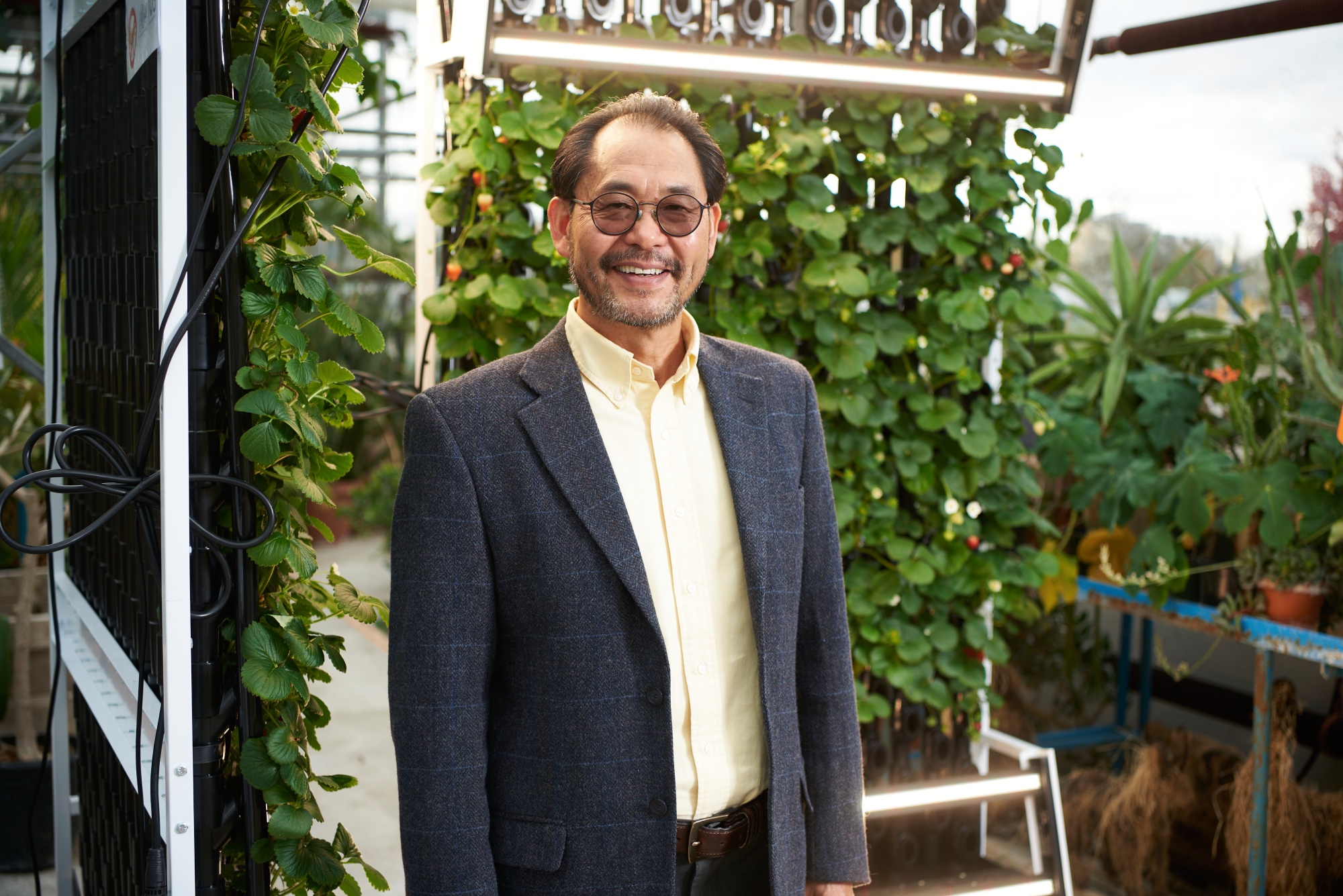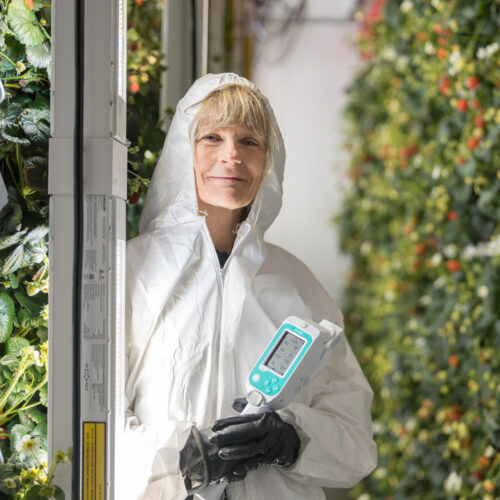Led by professor Youbin Zheng and collaborators at Agriculture and Agri-Food Canada (AAFC), the team is engineering the next generation of greenhouse systems by integrating artificial intelligence, smart energy use, smart lighting, and precision horticulture alongside sustainable design. Starting with one of the biggest challenges to year-round strawberry production—high energy use for heating and lighting—the team is developing automated data-driven solutions to optimize how greenhouses use energy and maintain ideal growing conditions.
The Scaling Phase builds on their success, taking innovations from the university greenhouse at Guelph and AAFC’s state-of-the-art facility, optimizing them, and then scaling up to a commercial-level greenhouse. Each step is a testing ground, a way to refine technology, gather data, and ensure that by the time growers adopt these systems, they are reliable, scalable, and ready to deliver results.
Three innovations lie at the heart of this transformation. The first is an AI-driven fertigation system, which fine-tunes water and nutrient delivery in real time. By continually recycling and reusing resources, the system reduces waste while supporting plant health. Early trials have shown how data-driven precision can solve long-standing challenges in indoor agriculture, thereby creating a foundation that can scale to commercial operations.

The second innovation tackles one of the largest costs for indoor production, and the heart of the solution: lighting. AI-controlled systems will be trialled to adjust and optimize both the timing and intensity of artificial lighting to take advantage of off-peak electricity pricing. Since off-peak energy often comes from renewable sources, this approach could significantly reduce both energy costs and greenhouse gas emissions. These systems are now moving from small-scale trials to larger commercial environments, where they will demonstrate how intelligent design can make sustainable production economically viable.
The third innovation reimagines greenhouse layouts with multi-level vertical production to maximize the use of space. By balancing natural and artificial light across every layer, the team ensures plants thrive no matter where they are situated in the system. Combined with AI, heat and water capture and reuse, and precise environmental controls, this approach maximizes yield and resource efficiency, showing how thoughtful engineering can amplify the potential of every square metre.
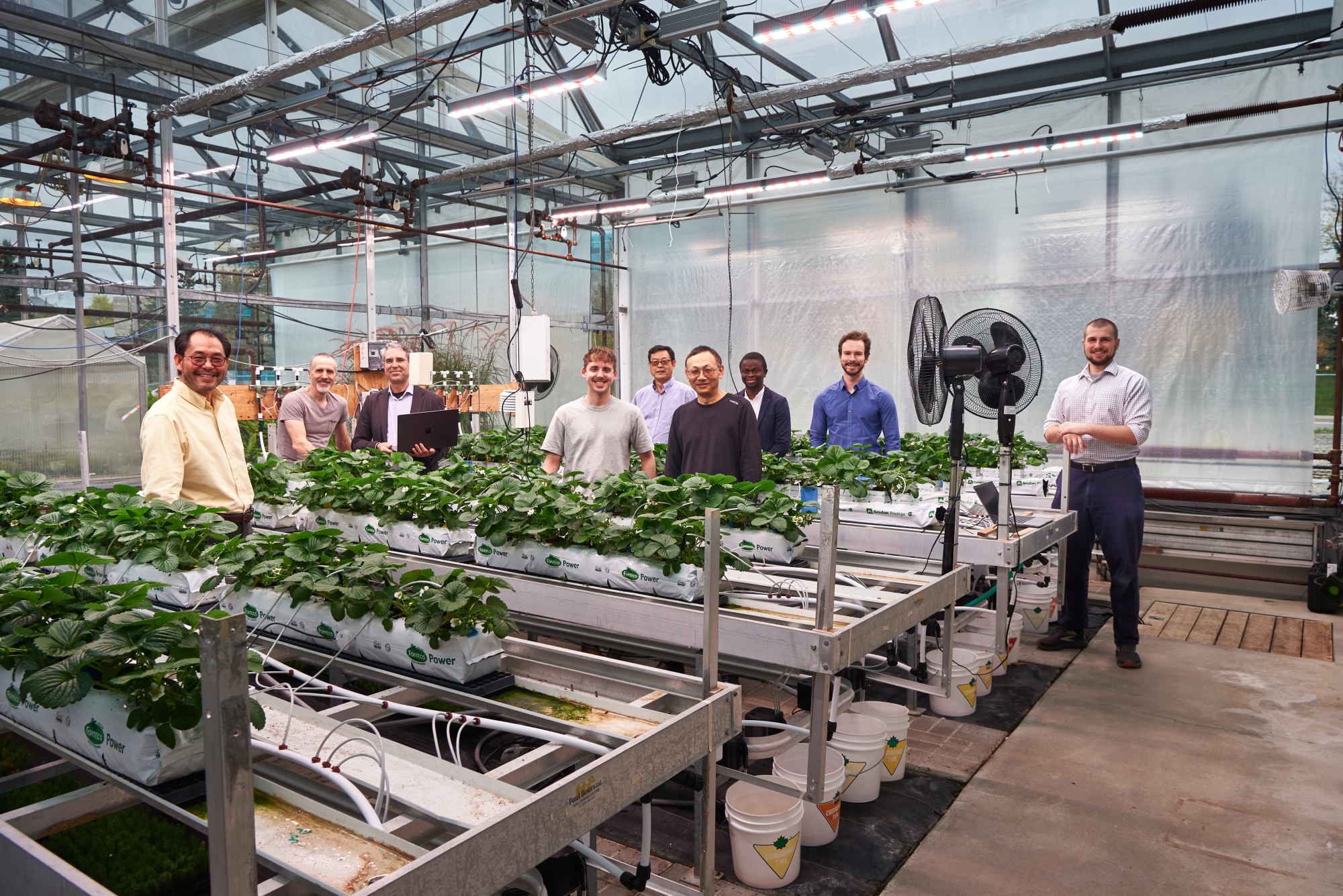
None of this would be possible without the team itself. Horticulturalists, computer scientists, engineers, and students work side by side, blending expertise in plant biology, AI, and commercial operations.
As Professor Zheng puts it, “The AI doesn’t understand plants, and horticulture alone can’t scale. It’s the combination—the collaboration—that makes these systems intelligent, efficient, and practical for real growers.”

By testing, refining, and validating each innovation in stages, the Guelph team is not just developing technology—they’re building a blueprint for a smarter, year-round, and climate-resilient food system. From research greenhouses to a commercial operation, their work will help Canadian growers produce more with less, sustainably and with confidence.
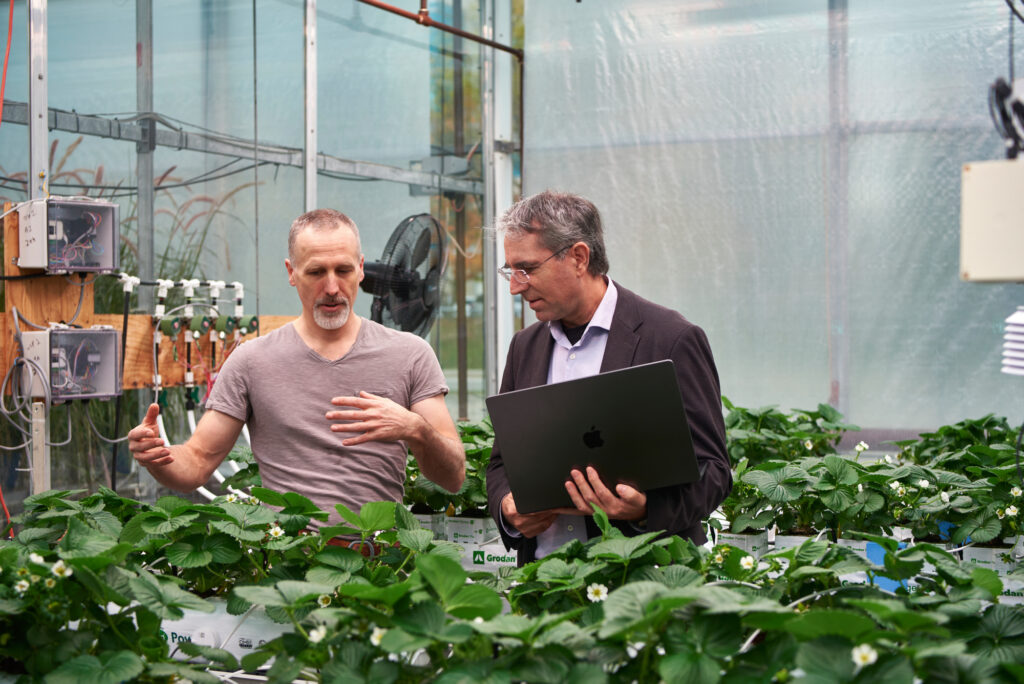

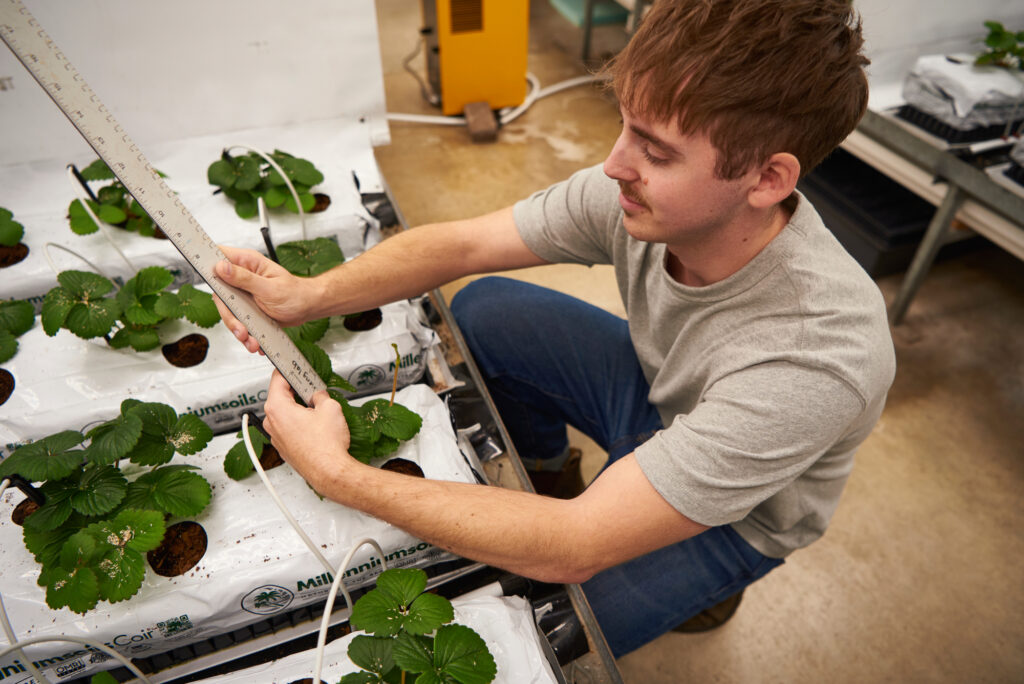


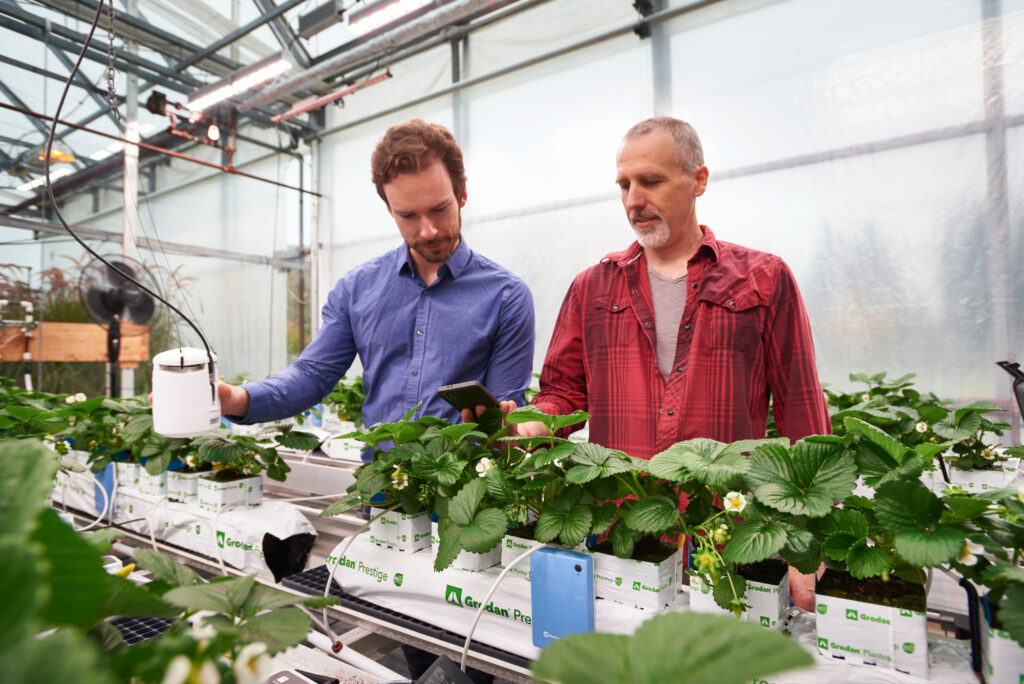
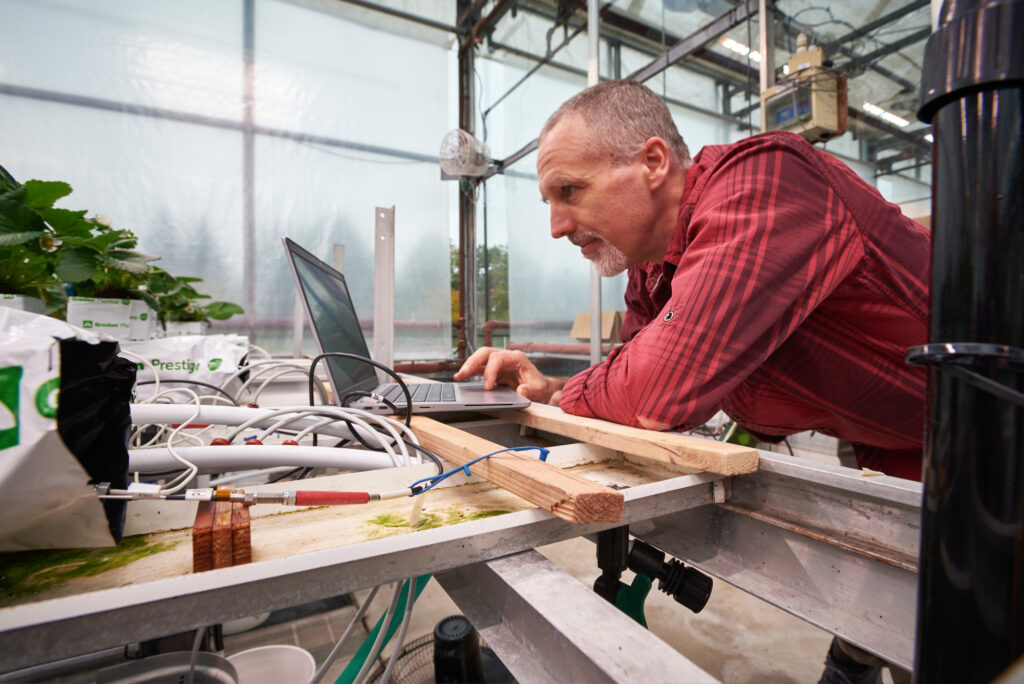


Collaborators
- Agriculture and Agri-Food Canada (AAFC)
- Biophi
- Sollum Technologies
- Climate Control Systems
- Hoogendoorn America
- Ontario Ministry of Agriculture, Food and Agribusiness (OMAFA)
- Meteor Systems – North America
- University of Windsor

